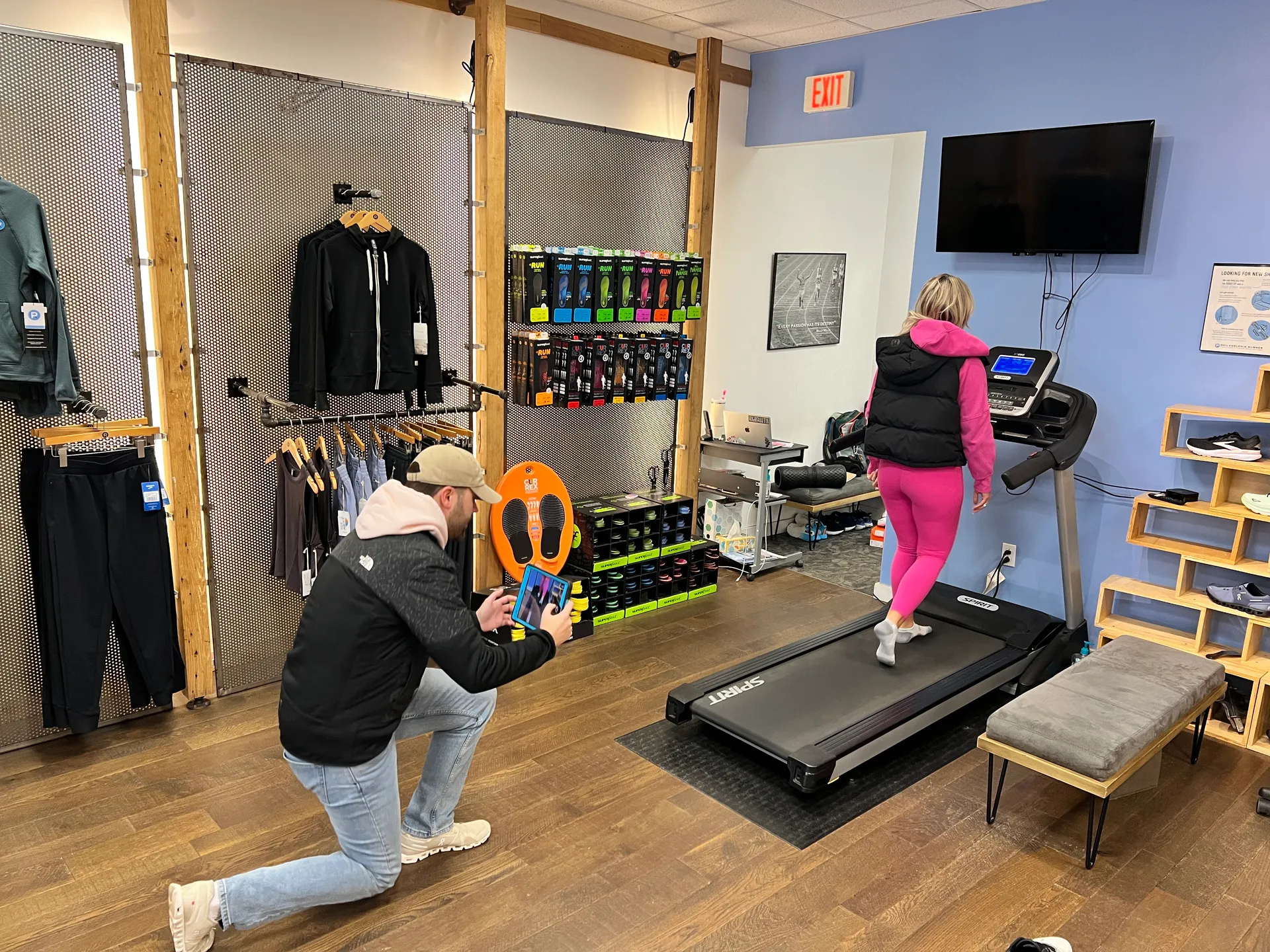This blog is dedicated to anyone out there who may need, or has been motivated to run/walk and is looking for a few tips on deciding how to pick the right shoe. We know finding a shoe that works for you can be hard so we're keeping this blog simple. Finding shoes is all about Fit, Feel, and Function.
Fit:
Allow about an inch, or a thumbs width in the front, or toe box of the shoe. This allows for your toes to spread and (aside from the midsole of the shoe) absorb shock. If a shoe is too short, then you “run” the risk of blisters, lost toenails, or an unnatural feeling when you strike. On the contrary, if the shoe is creasing laterally and you can folds in the upper, then you may want to try a different size, or a narrower fitting shoe or width.
Your arch should fit secure enough into the shoe, so your instep is not too tight on the top (or saddle) of the shoe. An easy way to check this is to make sure that you can lace up your shoes with some give, or extra lace. If there is not much lace left and the shoe feels tight on your instep then you have an improper fit.
The midsole is the space between basically the top (upper) and the bottom (outsole), but it contains the cushioning/ shock absorption and stability/ structure. The midsole should feel responsive and natural feeling through entire foot strike. Regardless of your stability needs, or if you wear an insert, you want the midsole to feel like the cushioning is right where you need it when you land, and that it bounces back to keep you moving forward. I will touch more upon this as well as the Heel cushioning and forefoot cushioning as I discuss “Feel.”
The heel counter should feel secure, and align with the shape of your heel. Make sure that you have slightly tapped your heel back in the shoe tied the laces just like you were going out for a walk/run (eliminate the variables and simulate as if you were about to use it). Look for visible gaps or slipping in the heel and ask for an alternate lacing suggestion if needed.
NOTE: Some shoes have external heel counters, while some are built in the shoe, while others have eliminated them all together so it’s important to see what you like and what works for you.
The ankle collar should fit smoothly and not interfere with your ankle bones, or your Achilles Tendon. Some shoes use a more padded approach to their ankle collars; while others structure their ankle collars to have a more curved fit. If the ankle collar is rubbing on your ankle bone, you may blister
The upper of the shoe (the materials aside from the midsole and outer sole) should feel smooth and be void of any stitching or areas that may cause irritation. If you have a tender spot on your foot, make sure that there are no overlay that could cause pain. If you have a bunion, pay real close attention to this! As technology increases uppers are being designed to be as seamless, and light as possible, allowing your foot to “breathe,” with the expectation of trail, and water/weatherproof style. These options are designed to repeal water and keep your foot warm during those cold weather days (brrrrrr….)
The outsole or the bottom of the shoe should provide traction and feel comfortable. The shape should align with your foot shape and foot strike. The material should not feel stiff or heavy
Feel:
This can be somewhat subjective and is based on personal preference. Based off my years of fitting runners and walkers, I always recommend (if you are able to) to take a few steps or lightly run in the shoe. The shoe should feel like a more cushioned and supportive extension of your foot. Running, walking, and forward motion can be hard enough. You do not want to have to think about “is this shoe comfortable?”
The heel, midsole and forefoot cushioning should make for a seamless transition through your gait cycle. I like to say, “The shoe should roll with you.” You want to make sure that you arch aligns with the midsole of the shoe and that you do not feel or even see any gaps. For example; If your foot rolling or pushing out the side? That may not feel the most comfortable or provide you what your foot needs. If you have an insert in the shoe, make sure that the shoe is a good vessel for it and that it fits the shape of the said insert. If the shoe has stability features in the midsole, you want to make sure that you feel even and natural with them. By ensuring that they the fit and feel is accurate, you can pay attention to how other parts of you feel during your run/ walk and enjoy yourself more.
Function:
The function of a running shoe is forward motion. Whether it’s walking, running, or a combination of both, it’s important to know what the shoe and its components are designed for. With that said, the shoe will function well if used for its designed purpose. Avoid playing tennis, kickboxing, or anything activity that involves a lot of lateral movement and pivoting.
If you have any questions, feel free to reach out to us anytime or stop by one of our store locations to chat with our staff:
PR Center City: 1711 Walnut Street, Philadelphia, PA
PR University City: 3621 Walnut Street, Philadelphia, PA
PR Manayunk: 4358 Main Street, Philadelphia, PA
PR Glen Mills: 505 Glen Eagle Square, Glen Mills, PA

